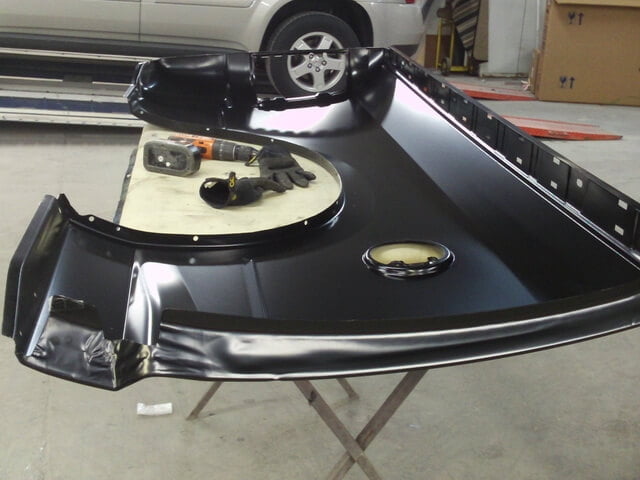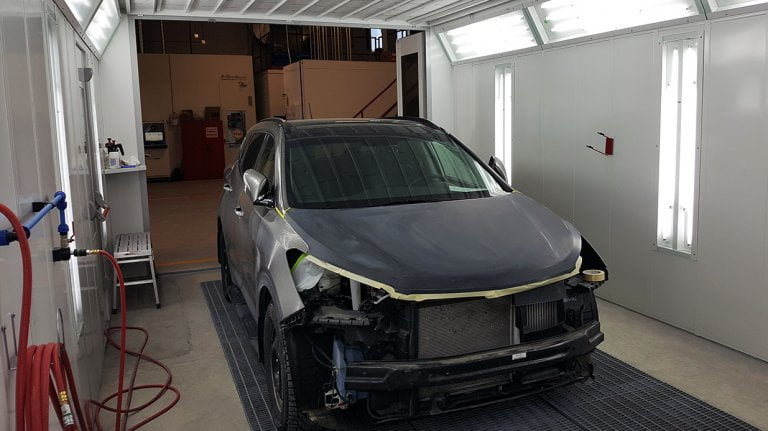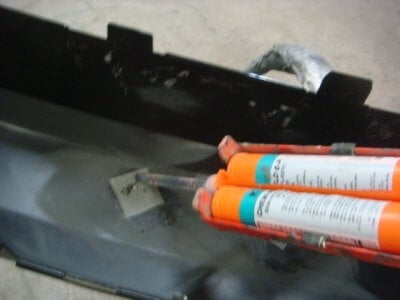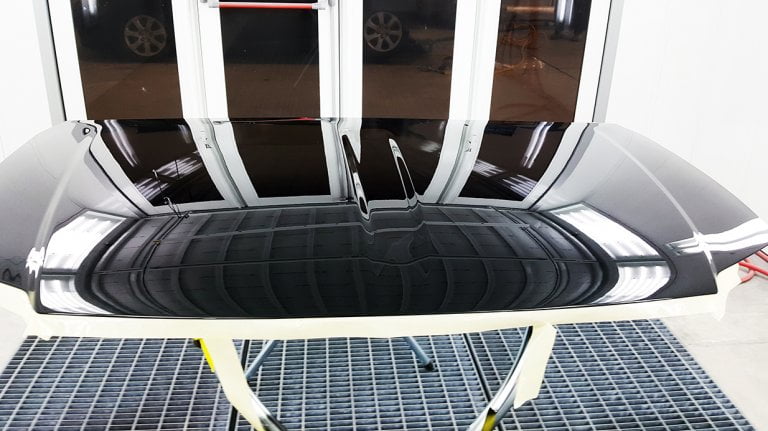Repairing Dented Panels

Repairing Dented Panels
Repairing major or minor dents in body panels requires a skilled hand and feel for straightness. Although much of this is learned with experience you can still obtain a straight repair using a “guide coat” to help you achieve a good repair.
Pre-Clean your Panel
Wash your panel down with soap and water and a wax/silicone remover prior to beginning any work on your panel. Take the opportunity to inspect the entire job for other damages you may want to fix at the same time.
Remove the Paint
Using a grinding disc ranging from 36-48 remove the paint down to the bare metal wherever the damage is and slightly beyond.
Reshape the metal as best as you can
Always attempt to hammer and dolly the metal back into shape before pullying from the outside to avoid burning the panel with a spot welder. If the dent cannot be accessed from the backside you can use a spot welder to remove the dent. Place welding studs in the low area\’s of your dent, then use a slide hammer to pull the dent our. Do not overpull! You should also hammer down any high spots, then grind away the welding studs if you used them.
Apply your Body Filler
Mix your body filler on a metal or plastic mixing board adding about 3% hardener to your filler. Mix using a sweeping motion to press out any pinholes that may form. Apply the filler in gradual skims, first fill the dent, next apply a little bit more, then cover then entire grinded area.
Block Sand
Using 80 grit paper on a block, start sanding to shape your body filler back to normal. When you get your filler close to normal again you can apply either some graphite powder of black paint to the filler. This will help you spot out high and low spots in your body repair. As you block sand if black paint remains in one area it indicates a low spot. If you feel you\’ve sanded too much you should re-apply another coat of body filler and repeat this process. When your dent is almost sanded enough you should also switch to some 120 grit to final sand your body filler.
Apply a Final Glaze (Finishing Putty)
Apply your finishing putty over the entire repair area (inside the metal, not over paint) and allow to dry. Do not load this coat on, this is just to fill in your sand scratches and any pinholes that may have occurred in your body filler. Block sand this the same way as your filler but try to start with 120 and end with 180 to 320 grit paper. The finer you finish the less chance of sinking problems occurring later when the paint cures. You can use a guide coat on this step also.
Common Mistakes
- Using a Dirty Spreader – Ensure you have a clean spreader on both sides. This is one of the most important steps in applying your filler, a dirty slick will present a lot more challenges then many people realize.
- Mixing on Cardboard – This introduces air into the mix causing more pinholes in your mix. Avoid mixing on this kind of material.
- Not Grinding Far Enough – Sometimes it is difficult to judge where the dent begins as it can be further then it appears. Pay close attention to how far your repair should need to go.
- Too much hardener – Do not mix your body filler based on temperature, mix it according to the technical data sheet. (usually 2-3% by weight)
- Failing to remove coarse scratches – When you leave coarse scratches behind for the primer to fill it can lead to sinking after the paint cures.








Great advice..Having a dent on your car is like walking around the mall with a huge ketchup stain on your white tee—it’s unsightly. You can ignore it, but other people won’t and they’ll unfairly judge you for it,So its necessary to repair as soon as possible.